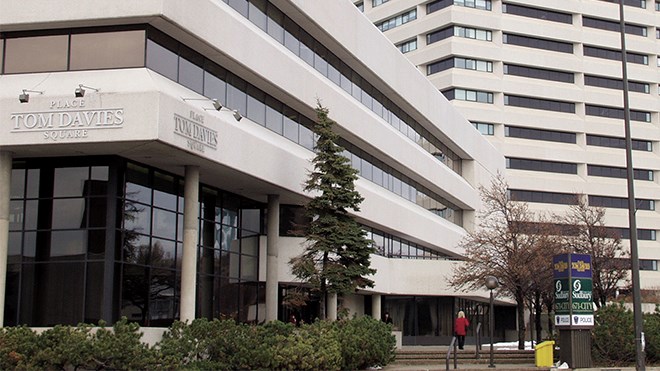As far as long-standing practices go, the city's pay-as-you-go policy is one that has remained firm, even as councils have changed and a new city was created.
Born out of the high-interest rate, high debt era of the early 1980s, Greater Sudbury today has one of the best asset-to-debt ratios of any city in the province.
But on Tuesday, councillors received an overview of what it would mean to end the policy and borrow to finance some of the big projects they're aiming to complete.
CAO Ed Archer said the meeting was to “set some context” on debt financing. Cities have limited means to raise money, he said: taxes, user fees, grants and return on investments.
“So debt, when we use it, needs to be repaid from one of those four streams of revenue,” Archer said. “But why would you want to use debt?”
He compared it to homeowners who borrow to buy a home, or to repair a roof or install new windows. It's a way of maintaining or building what you need to protect what you have.
“Debt financing helps bridge the gap between how much money we have and how much we need,” Archer said.
There are a number of good practices that should be followed, however. For example, the debt should be structured so that the people who will enjoy the asset will pay for it. And in some cases, cities pay more each year to maintain an old asset than it would cost to borrow to build a new one.
“Debt seems like a viable choice” in those cases, Archer said.
Both a new arena/events centre – estimated to cost between $80 million and $100 million – and the $5 million needed for the Place des arts are candidates for debt financing.
In Sudbury's case, the federal government has major infrastructure funding for projects that are shovel ready, he said, so “we do have support from senior governments.”
Archer said the city's current debt management policy – limited to five per cent of net revenues, or $19 million – is conservative. For example, the province sets the limit for cities at 25 per cent.
Right now, the city has several commitments – to the School of Architecture, the hospital, Pioneer Manor, the Biosolids plant
– that totals about $9 million a year. Under the current debt policy, that leaves about $10 million.
Ed Stankiewicz, the director of finance, assets and fleet, said the city could take advantage of low interest rates and borrow to access the infrastructure funds from the federal government.
He said they could borrow as much as $152 million and pay it back over 20 years at an interest rate locked in at 3.3 per cent.
“Debt financing could provide a unique opportunity,” Stankiewicz said.
Jamie Rodrigues, a vice-president with TD securities, said financial institutions are eager to lend to municipalities because the debt is guaranteed by the province.
“Banks love financing this sector,” Rodrigues said.
But if the city is going that route, he said timing is important, since historically low interest rates are expected to increase.
“Our forecast is for [rates] to gradually move higher in the next few years,” Rodrigues said, adding that “TD will allow you to lock in the rate for the full 30 years.”
The city could either borrow through the province, or spend $30,000 to get a credit rating from agencies such as Moody's or Standard & Poor.
“They would give you a credit assessment and that would play a big role in the (interest rate) you would have to pay.”
